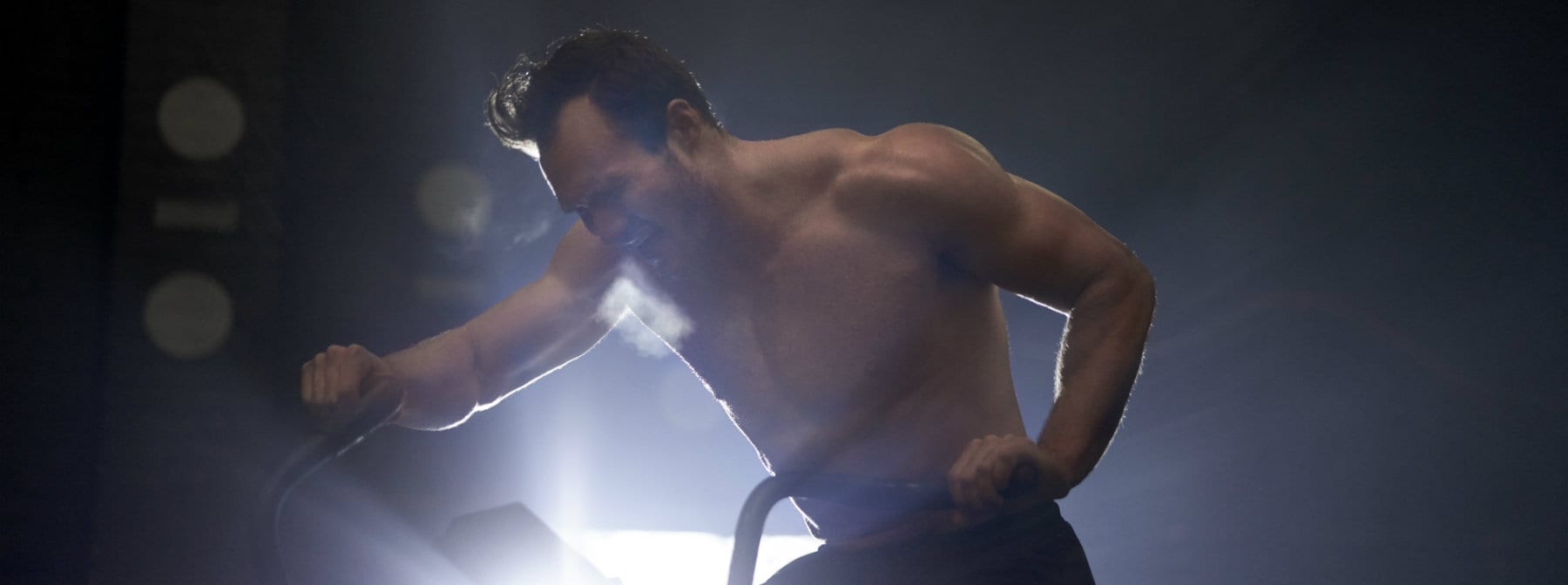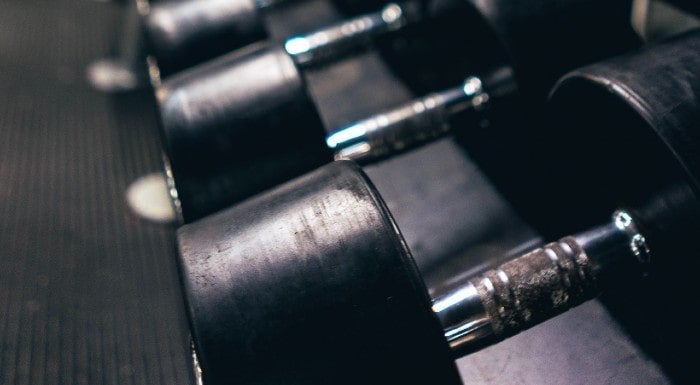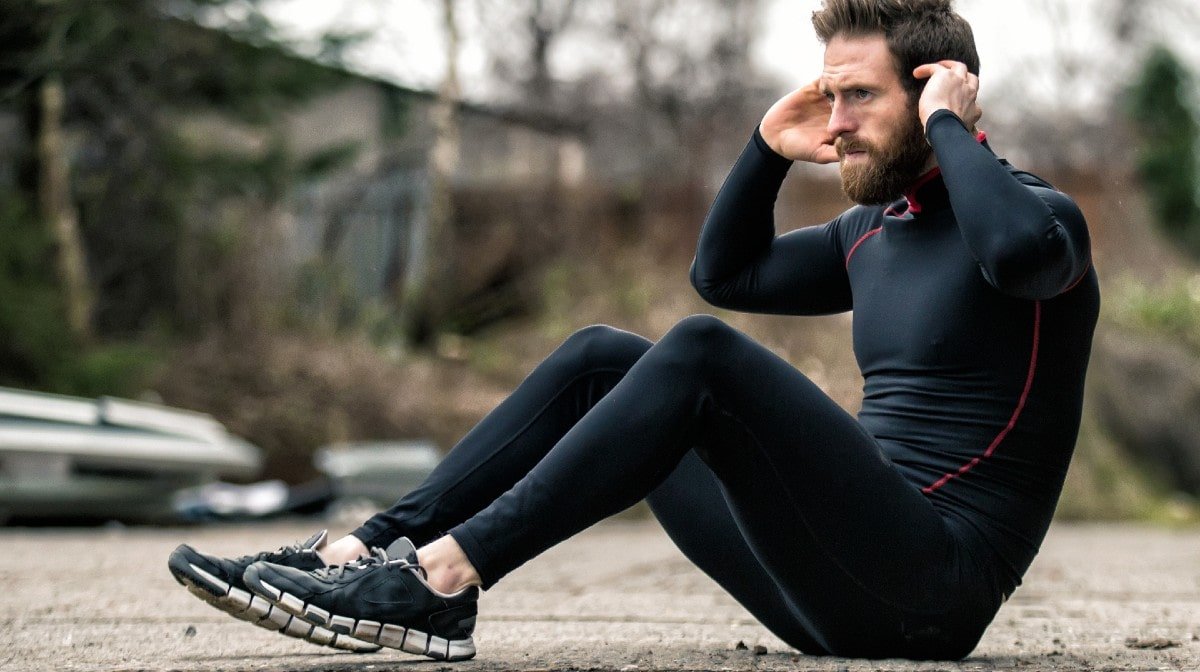

There are two main phases in a bodybuilding cycle — one phase is putting on as much quality muscle as possible, often called bulking or off-season. The second phase is trying to get as lean as possible, and is known as cutting or competition season. In this article we’ll go through how to set up your diet and training plan for a bodybuilding cut.
Bodybuilders are among the leanest athletes in sport by the time competition comes around. Male competitors often sit well below 10% body fat and female competitors can drop down close to 12%, and a little lower in some cases. Getting this lean requires serious commitment to the bodybuilding lifestyle, but there are ways to make the process easier if followed correctly.

To lose weight and body fat, you need to be in a calorie deficit. This means you need to be burning off more energy than you consume.
Now, before you can create an energy deficit you need to work out how much you’re eating on average throughout the week. A simple way to do this is to track your daily food intake, along with your daily weight, and see what the average is for the week.
This could be as simple as downloading a food tracker app, recording what you eat each day and taking the average for the week. At the same time, you should weigh yourself each morning and look at your average over the week. This will give you an estimate of your weight, as it’s normal for it to fluctuate daily.
Next, you need to create a calorie deficit. To lose approximately 1lb of fat, you need a 3500kcal deficit throughout the week (that’s 500kcal less each day of the week). To lose 2lbs (approximately 1kg) a week, simply double the daily calorie deficit.2 It’s normal to lose fat more quickly during initial cutting stages when body fat is higher. As you start to get leaner, the rate should slow down as you don’t want to lose hard-earned muscle.
Summary: Successful cutting requires tracking to achieve a consistent calorie deficit during the cutting period.
Your diet will make the biggest difference to your fat loss. Training and general activity levels will contribute slightly to energy expenditure. Lastly, cardio can be added in a systematic way to help increase energy expenditure.3
So, the two sides of the energy balance equation are energy intake (how much you eat) and energy expenditure (how much activity and exercise you get in). A combination of less food and more exercise work in combination to get you bodybuilding lean.

Spoiler: Yes, and it can actually help your cut.
2 years ago By Liam AgnewAlmost any diet can contribute towards your cutting phase if you have a large enough calorie deficit in place. While there are no particular types of foods more likely to make you gain weight (all foods contain calories), there are some foods that become more important during a cut and will make the process a lot easier. As mentioned above, calculating and sticking to a calorie deficit is the first step when starting your cut. Decide on the rate of weight loss you want — usually 0.5 to 1kg per week is a good place to start. This means you will need to be on a daily deficit of 500-1000kcal. 2
So, how does this look in real terms? If you weigh 90kg and consume on average 3000kcal per day and wanted to lose 1kg of fat per week, you need to create a daily deficit of 1000kcal per day.
This means you need to consume 2000kcals per day.
The next step is looking at your macronutrients. There are three macronutrients — protein, carbs and fats.
Protein is arguably the key macronutrient. It’s responsible for maintaining lean muscle mass when cutting and aiding recovery from training. It also has the added benefit of keeping you full for longer. This is because it often takes a while to chew and digest solid proteins, so this helps curb hunger hormones.
Protein also has a high thermic effect of food, meaning it takes a lot of energy to break down, which is great during a cutting phase. A target of 2-2.4g per kilogram of bodyweight each day is good for most people on a bodybuilding cut. 3
Let’s stay with our example of 90kg bodyweight. We have a calorie-intake target of 2000kcals per day and a protein target of 180g (2g per kilo of bodyweight per day). 1g of protein has 4kcals, so this is 720kcals per day.
Summary: While we need a calorie deficit for successful cutting, getting enough protein is essential to preserve muscle.
These are a key component for your health and are an essential part of your diet. That means that you need dietary fats every day. Without them, many metabolic processes would shut down. Fats are responsible for producing powerful muscle hormones like testosterone, and for absorbing many vitamins and nutrients. 4
Daily targets are usually set as a percentage of daily calories. The recommended amount of fat can be anywhere from 20% to 30% of your daily calories. Towards the end of cutting, fat intake might drop below this recommended amount for a small time because calories are low and protein needs to be kept high to maintain muscle. The shorter this period lasts, the better for your health.
Continuing with the example above, we can take 20% of 2000kcals, giveing us 400kcals a day from fat. To calculate how many grams of fat we need, we divide 400 by 9, as each gram of fat has 9 calories. So we have 44g of fat per day in our diet plan.
Summary: Reducing fat to about 20% of total calories is essential for successful cutting because fats are the most calorie-dense macro.
These are the primary fuel source for bodybuilding training. Many people mistakenly believe you need to drop carbs to get lean. If carbs are dropped too low, training intensity lessens, which could lead to muscle loss. Most fruit and veg are carbs, so they play an important role for energy, health, recovery and immune function.7
Let’s go back to our 90kg, 2000kcals example:
We currently have 180g of protein (720kcals) and 44g of fats (400kcals) per day. To work out carbs needed, we take total daily calories (2000kcals) and subtract the calories from protein and fat we have already calculated.
2000 – 720 – 400 = 880kcals. To work out the amount of carbs, divide 880 by 4, as each gram of carbohydrate has 4kcals. This leaves us with 220g of carbs per day. Our calorie and macro split looks like this: 2000kcals per day; 180g protein; 44g fat and 220g carbs per day.
Summary: While carbs are essential for energy, they also supply a lot of calories in our diets. Calculate your carbs from what's remaining after you’ve calculated protein and fat.
A lot of people don’t know what type of foods they should eat when on a cut. This might be controversial to some, but ultimately a calorie is a calorie, and no specific food makes you put on weight. This, however, is only a small part of a bigger picture.
Hunger can be a real issue when going on a serious cut. While it might not be the food you eat that makes you gain weight, there are some foods that don’t do much to keep you full for long and leave you wanting more. These foods are often from more refined sources, and light up the pleasure responses in your brain.
If you’re fortunate enough not to get too hungry during your cut, you can be a lot more flexible in your food choices. If hunger is an issue (and it is for many people), then sticking to single-ingredient, whole-food sources might be a good idea.
Stick to lean complete proteins like chicken, fish and lean meats. For fats, choose healthy sources like oils and avocados, with a small amount of saturated fats from meat and dairy.
If most carbs you consume come from vegetables and other high-volume sources such as potato, oats, etc, then there’s a good chance hunger can be managed as much as possible.
If cravings come in, you can always include the odd treat in your diet, as long as it fits your macro target — just be sure to remember that you may trade off some tasty foods with being hungry.
Summary: Choosing your food while cutting should be based on your macro goals. Work with a nutrition professional if you need help, and remember cutting diets should only ever be temporary.
A lot of people make the mistake of changing their training too much when going on a cut. Usually, most muscle is gained in the 8--12 rep range. 6
What you don’t want to do when starting a cut is to suddenly drop weights and only use a high-rep routine. This is one way to lose hard-earned muscle gained during a bulk. What you want to do is train with the heaviest weight you can within the 8-12 rep range, and stick to what worked to put on muscle in the first place. 6
Your weightlifting workouts should be used to help keep your muscle mass as high as possible, and not to lose body fat. Your diet and cardio should be enough to help you lose weight and get into the shape you want. 3
Summary: A low-rep, high-weight routine can help support your muscle mass without losing body fat.